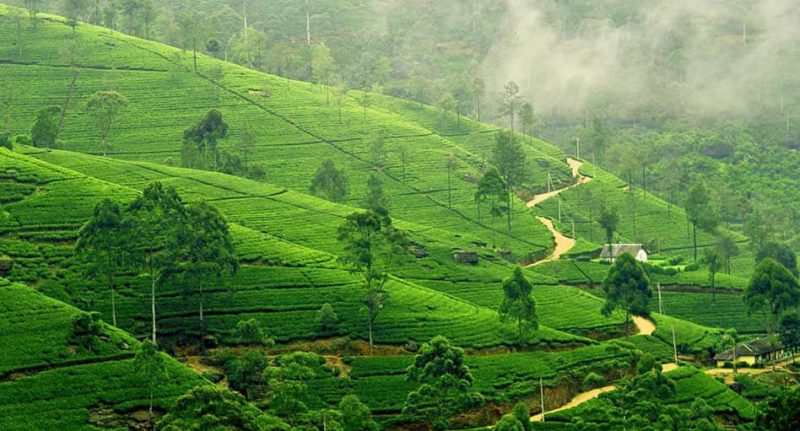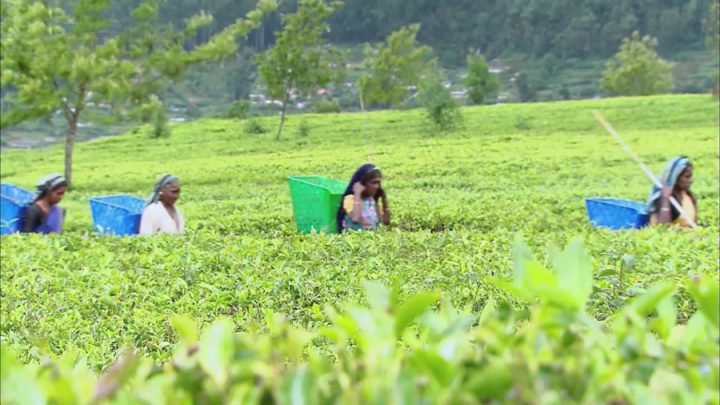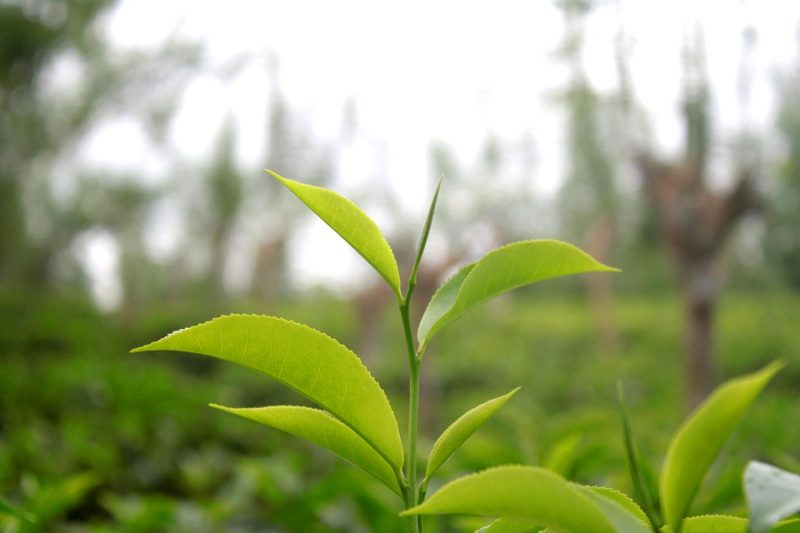Ceylon Tea
Tea the drink that helps you to prevent cancer
Sri Lankan culture had a very close relationship with many foreign countries during the medieval time, simply because Sri Lanka was a trading hub in the Orient. However, the relationship of Sri Lanka with several foreign nations was not confined to trading especially with three colonial rulers, namely Portuguese, Dutch and British, because they interfered the political affairs of the country.
British colonial period was the longest colonial period of Sri Lankan history. Therefore the British impact is clearly visible in many angles of the Sri Lankan society. Sri Lankans, like most people in southern Asian cultures, love to have several cups of tea every day. Even though, coffee is also served more than 90% of Sri Lankan make their choice on Tea. Initial development of the Tea industry on the island is essentially attributed to the British colonial tea planters. And perhaps the Ceylon tea would not have come to being, I case of absence of the British colonial period.
Sri Lanka or Ceylon as it was called earlier, is a leading Tea producing nations in the world. This world-renowned Ceylon tea has a firm grip on the life of people of Sri Lanka. Today the tea industry is one of the major contributors to the country’s GDP. It has become one of the main foreign exchange earners of the island. More than one million people of Sri Lanka are employed in the tea industry.

Usually, the tea consumed in Sri Lanka is very strong and the colour is very dark (almost black). This tea makes a very poor aroma and should be mixed with sugar and milk before it is ready for a drink. Mixing with milk reduces the strong flavour of tea while sugar adds the sweet flavour. This tea is called ‘milk tea’ and the colour is dark brown. Tea can be obtained without mixing with milk but sugar is needed to be added as a rule in order to reduce the strong flavour of the dark tea.
Usually, the Sri Lankans are heavy tea drinkers and it is one of the most popular thirst quenchers. Tea is served on every occasion in their life and they do not pass a day without consuming several cups of strong tea. The art of preparing tea is introduced during the British colonial period and later it went through major changes making it more appeal to local taste buds.
A lot of young and old people spends time drinking tea with friends in social gatherings. If you happened to make your holiday in Sri Lanka, you have the opportunity to taste this marvellous drink. Most hotels, greet their customers with a hot cup of tea and you have the option to choose, whether it is with milk or without milk.

The Tea is served in every corner of the country and it can be bought in luxurious hotels as well as from street vendors in busy cities. Basically, both tea varieties are more or less the same other than the cost. Perhaps tea at “petti kade” or street vendors is tastier than in the popular hotels. At a petti kade you are not only able to get a typical Sri Lankan tea but also you can see how it is done, because of the kitchen and the restaurant at the same spot.
Tea is available in different varieties of flavours and aromas, but the main ingredient of all of them is the leaves of the tea bush (Camellia sinensis). Value-Added tea production is considerably increased during the last several years due to the increasing demand for new flavours and aromas from foreign countries. But average Sri Lankans are not like to have taste or aroma added tea varieties and they love to have strong, dark Ceylon tea with milk and sugar. So, just drop by the nearby Petti Kade in the vicinity of your hotel and try the typical Sri Lankan milk tea during your holiday in Sri Lanka.
History of world-renowned Ceylon tea
Sri Lanka had been a leading coffee producer in Asia during the early stages of British colonial rule in the island. Coffee had been an important agricultural product of Sri Lanka and helped to attract foreign exchange with other products such as cinnamon, coconut and graphite. Coffee was a lucrative agricultural product till the 1860s, and it had to be given up owing to the coffee-rust fungus, Hemileia vastatrix. The fungus caused the huge destruction for the Coffee plantations making the plantation owners look for alternative crops.
Loolkondara Tea estate considered as the breeding ground of the Sri Lankan tea industry, which was masterminded by British planter James Tailor. Tea seeds that brought from Asam were planted in 1867 on a 19 acres state as an experiment. The experiment proved to be successful resulting first ever tea plantation on the island. After acquiring the knowledge of tea production James tailor had experimented with the manufacture of tea in his veranda.
The Tea manufactured by James Tailor had been in good quality and sold in the local market. James tailor improved his tea manufacturing process, but this time in a separate building equipped with machines. The first shipment of Ceylon tea exported in 1973 by Tailor and it sold for a good price in the London auction. Tea production was increased rapidly and recorded at 81.3 tons in 1880 from 23 pounds in 1873. Tea production stood at 22,899.8 tons by 1890 recording a further increase in the tea production.
Most of the tea plantations were located in the high elevations from 3,000 to 8,000 feet above the sea level. Tea was mainly grown in South-West part of the island at the initial stage then it was spread over the rest of the country making it one of the biggest agricultural products of the island. Today tea is grown in all parts of the country and it is mainly divided into 3 qualities low grown tee, middle grew tea and high grown tea.
Tea was introduced by the British rulers and it was in the hands of colonial rulers till 1971. It is estimated that more than 80% of tea plantations were owned and controlled by British companies. Not only the Tea plantations but also the graphite mining, transport, banks, alcohol, insurance, constructions and all other lucrative industries were controlled by British companies.
With the introduction of the land reform act in 1971, the Sri Lankan government took control of the foreign-owned plantations taking over the two-third of the total plantations of the country. Afterwards, most of the plantations were under state control till 1978. When the economy was liberalized in 1978, most of the government-owned plantations were sold to the private sector, keeping some shares with the central government.
Today Ceylon rank as the best tea in the world and Sri Lanka is the biggest tea producer in the world. Tea industry being the biggest industry provides one million jobs for the labour force of the island. The tea industry is rank 2nd among the industries that bring foreign exchange to the country.
Most Sri Lanka tour packages organized by seerendipity tours include tea grown mountains on the island. Therefore the guests have the opportunity to see the beautiful mountains that are covered by tea bushes, waterfalls, rivers, and beautifully clad tea pickers.
Most Sri Lanka tour itineraries that are organized for foreign travellers include tea plantation tours enabling the travellers to learn the process of tea manufacturing. You visit a tea factory to witness the tea production process, afterwards sip a freshly produced and brewed un-blended cup of Ceylon tea.

Where can I drink a typical Ceylon tea
Sri Lanka, better known as Ceylon is popular for tea, since the early part of the 1800s. Tea is the most popular thirst quencher in the society if there is a national drink it is none other than Tea. This traditional Sri Lankan drink is available throughout the island and it is the drink for all occasion that served from Business meeting to family get-together. It is served from boutique hotels that cater to High-end tourists to Kade or village boutique. It is the drink of social gathering served in wedding, almsgiving, and funeral and on all occasion, when village folk gather.
The most basic type of tea is known as black tea (“plain tea”) and served with sugar. The tea consumed in Sri Lanka is strong in taste and has a dark colour. It is so strong, not possible to drink without mixing with sugar. The tea served in Sri Lanka is very dark in colour and almost no aroma. Some people prefer to drink tea with milk (“milk tea”) and sugar, especially for breakfast. Drinking tea with milk is a habit introduced by the English colonial rulers of Sri Lanka.
Typical Sri Lankan plain tea serves without any added aroma, colour or taste. Tea has gone a long way since it was introduced to the island and now tea is available in many aromas and colours. Tea shops are available in populated cities such as Colombo, Galle, Kandy and Gampaha. Even though the number of choices not as much as in tea shops, leading supermarket chains are also giving the possibility of buying a large array of tea varieties.
The tea is not just a thirst quencher; it is a part of the company and nostalgia you are with, that can be the best experience in the village boutique, where farmers and rural folk get together and partake their evening dose of social talk. They stay for long hours and drink a couple of teacups. The caretaker of the tea shop is a key figure of this team and takes part in the conversation when he has no other customer.
Drinking green tea helps you to prevent cancers
New research on Green tea benefits has been proven to be a natural medicine to prevent cancers. Green tea contains and an anti-oxidant element called EGCg, a compound in green tea, inhibits an enzyme required for cancer cell growth and a major Green tea benefit is, that it can kill cultured cancer cells with no ill effect on healthy cells.
Details of the research on Green tea benefits will be presented at the 38th annual meeting of the American Society for Cell Biology in San Francisco.
“Our research shows that green tea leaves are rich in this anti-cancer compound, with concentrations high enough to induce anti-cancer effects in the body,” says Dorothy Morre, professor of foods and nutrition in Purdue’s School of Consumer and Family Sciences.
Scientist says that more than four cups of green tea a day can reduce the risk developing a cancer same times active compound of more than four cups of green tea a day can slow the growth of cancer cells.
Some people think that the source of Green tea and black Tea is totally different, but it not true because both green Tea and black Tes are producing the leave of tea bush (Camilia Cinensis). A different process of production differentiates the characteristics of the two varieties.
The first step of black tea production is called withering. During the withering, the tea leaves lose much of its water and weight due to the evaporation. The second step of the tea production process is rolling. After the rolling, it undergoes the third step, which is called oxidizing. Oxidizing considered being the most important step of the black tea process, deciding the quality of the tea. With green tea, instead of oxidizing tea leaves are steamed and parched to better preserve the natural active substances of the leaf.
Research has revealed, that the people who drink more than four cups of green tea a day seem to have a lower overall risk of cancer, but scientists were unsure how the tea produced these effects.
Morre and her husband, who is the Dow Distinguished Professor of Medicinal Chemistry and Molecular Pharmacology at Purdue, show in their independent study how green tea interacts with an enzyme on the surface of many types of cancer cells including breast, prostate, colon and neuroblastoma. The enzyme NOX, better known as quinol oxidase, helps with several functions on the surface of the cell that triggers the growth of both normal and cancer cells.
According to Dorothy Morre, the normal cells squeeze out NOX only when they are dividing due to the growth of hormone signals. As Dorothy Morre opine, cancer cells have somehow gained the ability to express NOX activity at all times.” This overactive form of NOX, known as tNOX — for tumour-associated NOX — has long been assumed to be vital for the growth of cancer cells because drugs that inhibit tNOX activity also block tumour cell growth in culture.
These findings suggest that chemical compounds that contained in green Tea leaves are capable of inhibits tNOX. Therefore, drinking several cups of Green Tea on a daily basis might considerably hinder the growth of cancer cells in the body.






